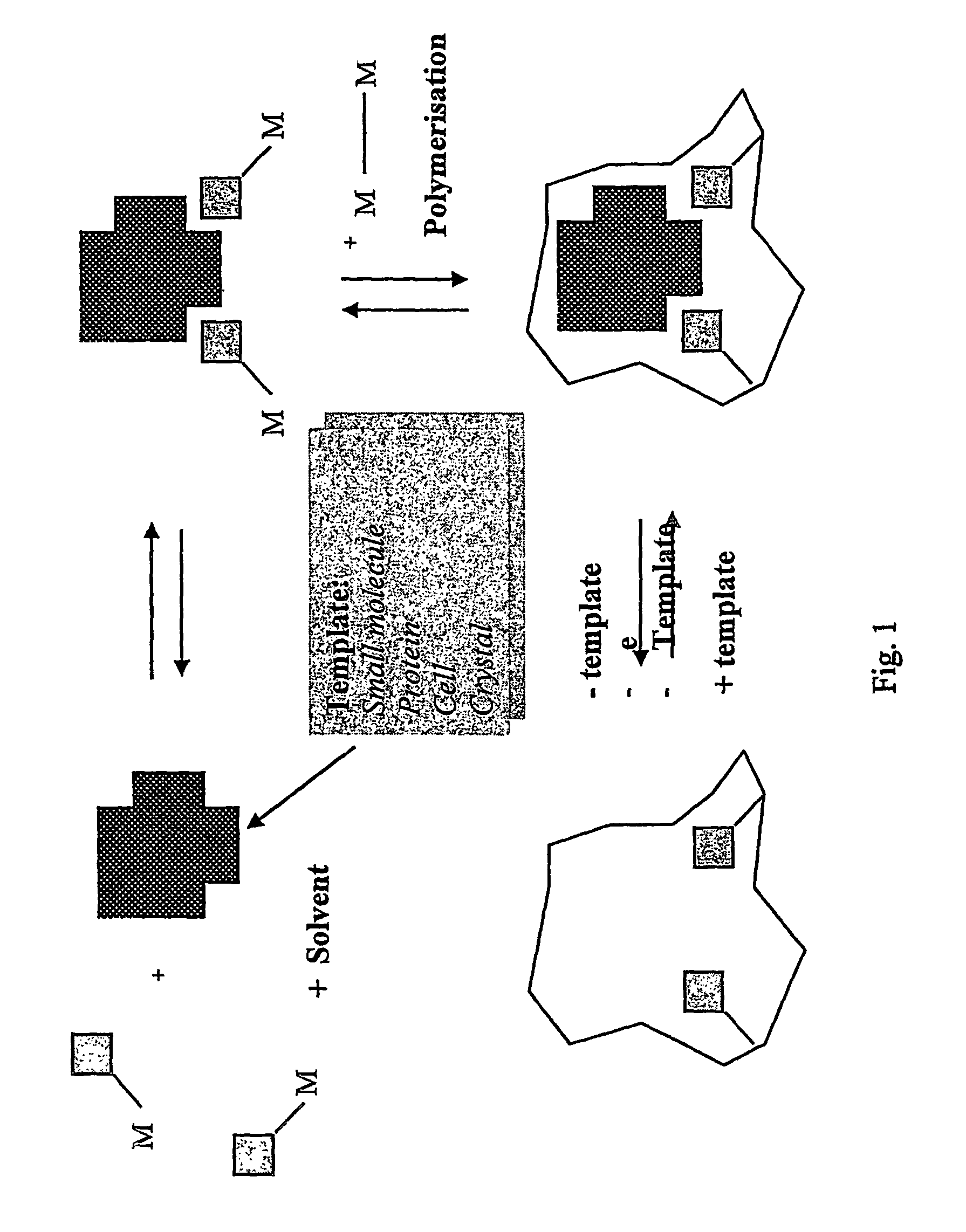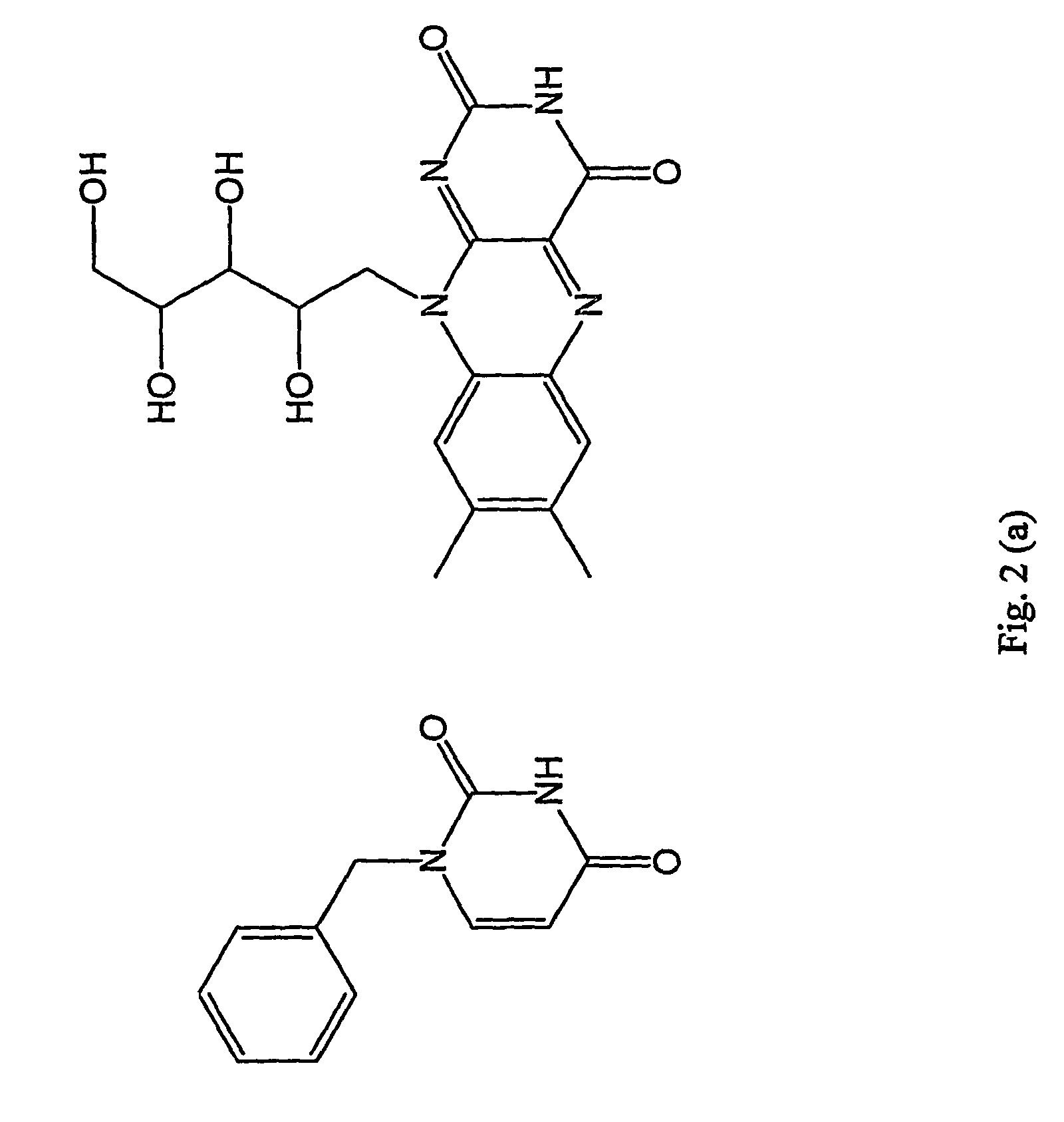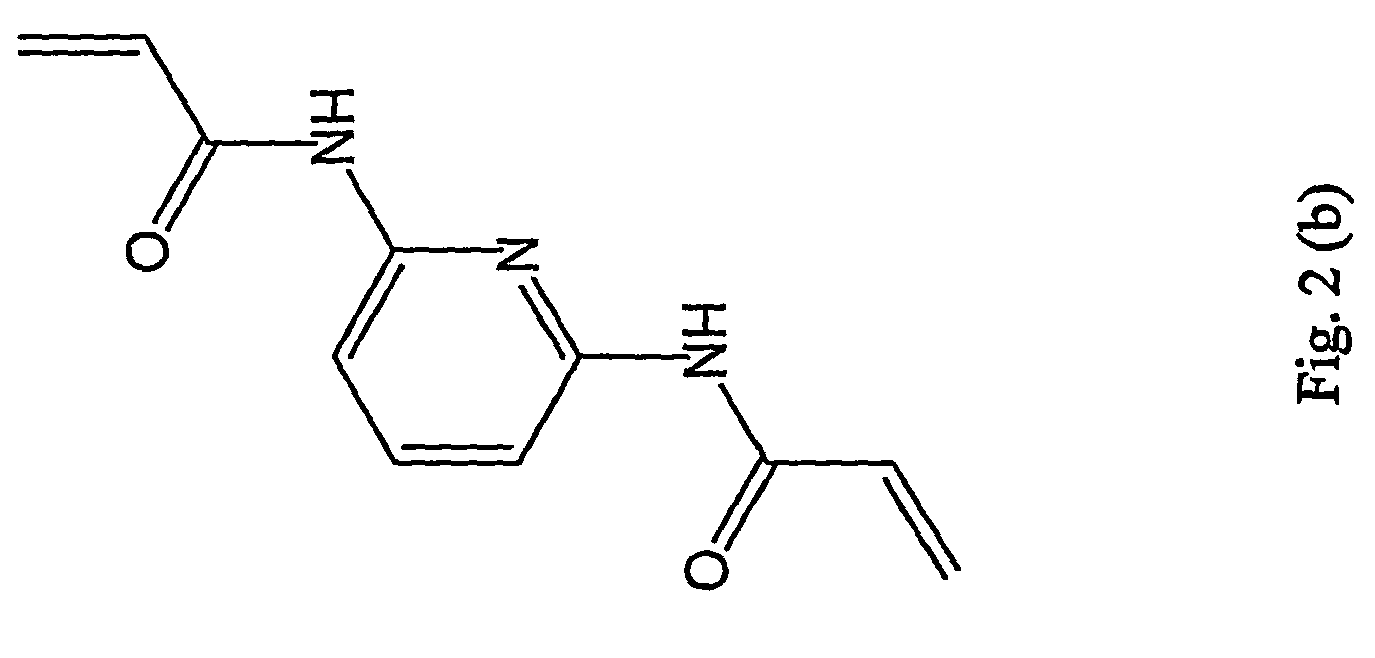Moleculary imprinted polymers for extraction of components from foodstuffs
a technology of imprinting polymers and food products, which is applied in the direction of biochemical equipment and processes, instruments, other chemical processes, etc., can solve the problems of limited solubility of such targets in conventional solvents, reducing the feasibility of conventional procedures described above, and reducing the possibility of hydrophilic targets or templates. , to achieve the effect of reducing the non-specific hydrophobic binding
- Summary
- Abstract
- Description
- Claims
- Application Information
AI Technical Summary
Problems solved by technology
Method used
Image
Examples
example 1
Synthesis of Riboflavin Acetic Acid Tetraester
[0098]2.65 g (7 mmols) of riboflavin, 2.9 g (35 mmols) of sodium acetate and 50 mL of acetic acid anhydride are weighed into a 100 ml round-bottomed flask. The mixture appears as a bright orange suspension. The flask is heated in an oil bath at 80-90° C. until a deep orange-red solution is obtained. The clear solution is then poured into an Erlenmayer flask containing approximately 200 ml of ice. The mixture is then neutralised using solid sodium carbonate (NaHCO3) and then extracted with 3×100 mL of chloroform (CHCl3). The organic fractions are combined and dried over magnesium sulphate (MgSO4). The solvent is then evaporated under vacuum and a bright orange solid is obtained. The crude product is reconstituted in minimum amount of methanol (MeOH) and then precipitated by addition of water.
example 2
Synthesis of Riboflavin Propionic Acid Tetraester
[0099]2.65 g (7 mmols) of riboflavin, 3.4 g (35 mmols) of sodium propionate and 50 mL of propionic acid anhydride are weighed into a 100 ml round-bottomed flask. The mixture appears as a bright orange suspension. The flask is heated in an oil bath at 80-90° C., until a deep orange-red solution is obtained. The clear solution is then poured into an Erlenmayer flask containing approximately 200 ml of ice. The mixture is then neutralised using solid NaHCO3 and then extracted with 3×100 mL of CHCl3. The organic fractions are combined and dried over MgSO4. The solvent is then evaporated under vacuum and a bright orange solid is obtained in all cases. The crude product is reconstituted in minimum amount of MeOH and then precipitated by addition of water.
B. Synthesis of Functional Monomers (Ex. 3)
example 3
Synthesis of 2,4-bis(acrylamido)-6-piperidinopyrimidine and 2,4-bis(acrylamido)-4-ethoxypyrimidine
[0100]The synthesis is performed in 2 steps:
(1a) Synthesis of 2,4-(diamino)-6-piperidinopyrimidine
[0101]2,4-(diamino)-6-piperidinopyrimidine is synthesised according to a published procedure by Roth et al. (ref: JACS, 72, 1924 (1950)). 14.48 g of 4-chloro-(2,6-diamino) pyrimidine and 50 mL of piperidine are mixed in a round-bottomed flask and stirred. The temperature is slowly increased up to 100° C. After 2½ hours at this temperature, 20 mL of ethanol is added to the flask and the resulting mixture is filtered. The precipitate is washed with 50 mL of ethanol. The filtrate is evaporated under vacuum and the solid residue is reconstituted in approximately 200 mL of water. The mixture is heated to 80° C. and then allowed to cool under vigorous stirring. 2,4-(diamino)-6-piperidinopyrimidine is obtained in the form of an off-white solid.
(1b) Synthesis of 2,4-diamino-6-ethoxypyrimidine
[0102]...
PUM
| Property | Measurement | Unit |
|---|---|---|
| temperature | aaaaa | aaaaa |
| hydrophilic | aaaaa | aaaaa |
| hydrophobic | aaaaa | aaaaa |
Abstract
Description
Claims
Application Information
 Login to View More
Login to View More - R&D
- Intellectual Property
- Life Sciences
- Materials
- Tech Scout
- Unparalleled Data Quality
- Higher Quality Content
- 60% Fewer Hallucinations
Browse by: Latest US Patents, China's latest patents, Technical Efficacy Thesaurus, Application Domain, Technology Topic, Popular Technical Reports.
© 2025 PatSnap. All rights reserved.Legal|Privacy policy|Modern Slavery Act Transparency Statement|Sitemap|About US| Contact US: help@patsnap.com



